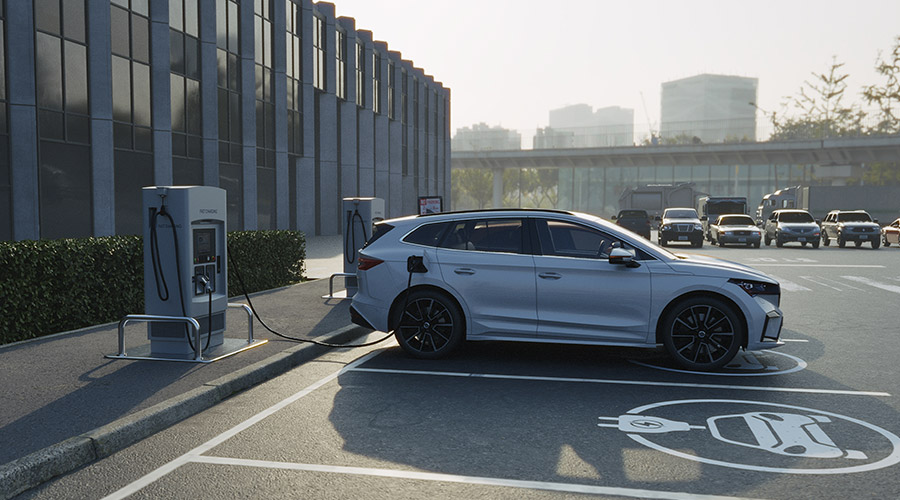As EV adoption continues to increase, one core problem the growing market faces is the lack of supporting infrastructure. Healthcare facilities that want to add EV charging to their offerings may struggle with retrofitting their existing infrastructure to accommodate it. In this manufacturer roundtable, Healthcare Facilities Today spoke with EV charging manufacturers about the challenges healthcare facility managers may face when integrating EV charging.
What are some challenges healthcare facility managers may face when trying to retrofit their building for EV charging?
“Facilities managers can sometimes face challenges in retrofitting existing facilities primarily due to the additional infrastructure costs, including upgrading electrical systems and load capacity, parking area modifications and charging station investments. Another challenge is finding adequate space for EV charging stations, especially in densely populated healthcare parking.
Facilities managers also need to comply with various codes related to accessibility (like ADA standards), safety and environmental regulations, which might pose a challenge. It should also be noted that there are typically good and workable solutions for these challenges.”
— Jenifer Yokley, chief marketing officer, Blink Charging
“As the demand for EV infrastructure continues to grow, healthcare facilities are increasingly exploring ways to integrate charging stations into their properties. Albeit facilities managers face the impact of utility upgrade requirements that rely heavily on substation power availability. While the benefits of offering on-site EV charging are clear—enhanced accessibility, sustainability and potential revenue streams—the retrofitting process comes with a unique set of challenges that facility managers must navigate.
One of the primary considerations is site selection. Determining the optimal location for chargers within the property is crucial, balancing convenience for users with infrastructure feasibility. This involves assessing whether trenching—the process of digging to lay electrical conduits manageable and cost-effective, as well as ensuring that existing electrical capacity can support the additional power demand.
Another factor is charging speed and its impact on both infrastructure and user experience. Facility managers must evaluate whether to install Level 2 chargers, which provide a slower but steady charge, or DC fast chargers, which require more power but offer rapid turnaround times. Coordination with electrical engineers is essential to ensure seamless integration with the facility’s existing grid and best determine most appropriate options.
Traffic flow and accessibility are also key concerns. Charging stations must be placed strategically to prevent congestion lines in parking lots while remaining visible and accessible. Proper signage is critical to guiding EV drivers to available chargers, reducing confusion and ensuring an organized system for usage.
Beyond installation, software and maintenance support play a significant role in the long-term success of the charging infrastructure. Ensuring a smooth transition between different software platforms, managing payment systems and providing ongoing maintenance are all critical to keeping the chargers operational and user-friendly.
Healthcare facilities must also consider safety and aesthetics when implementing EV charging stations. Security cameras parking ballast, painted headers, cube cuts, should be installed to monitor charging zones, deterring vandalism and ensuring user safety, while trash receptacles and routine maintenance will help keep the area clean and visually appealing.
Handicap spots in EV charging parking spaces should consider using one and a half regular parking spots for everyone EV charger providing ample space for cable runs.”
— Eli Braha, executive vice president, EVectriFi Technologies Inc.
Jeff Wardon, Jr., is the assistant editor for the facilities market.

 Grounding Healthcare Spaces in Hospitality Principles
Grounding Healthcare Spaces in Hospitality Principles UC Davis Health Selects Rudolph and Sletten for Central Utility Plant Expansion
UC Davis Health Selects Rudolph and Sletten for Central Utility Plant Expansion Cape Cod Healthcare Opens Upper 2 Floors of Edwin Barbey Patient Care Pavilion
Cape Cod Healthcare Opens Upper 2 Floors of Edwin Barbey Patient Care Pavilion Building Sustainable Healthcare for an Aging Population
Building Sustainable Healthcare for an Aging Population Froedtert ThedaCare Announces Opening of ThedaCare Medical Center-Oshkosh
Froedtert ThedaCare Announces Opening of ThedaCare Medical Center-Oshkosh